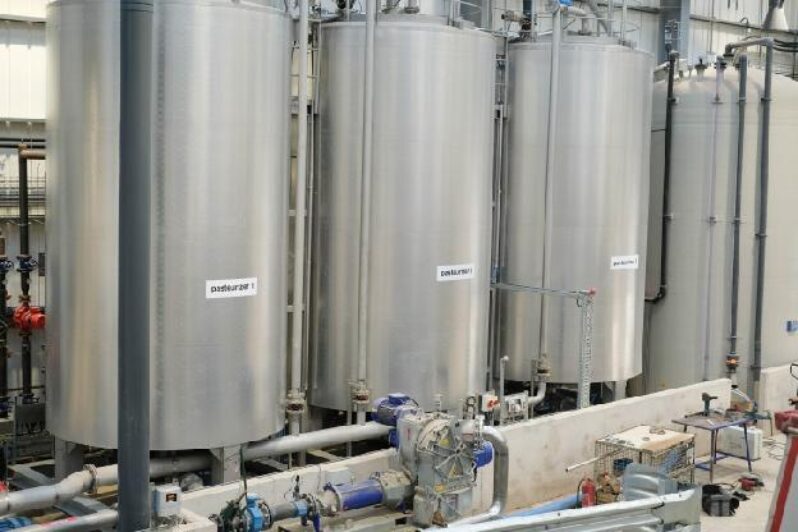Key Facts
Construction time: 9 months
Commissioned: September 2016
Achieved 90% power: November 2016
Design power output: 3 MWe (2 x Jenbacher 420 engines)
Facility footprint: 2.8 hectares
Waste input: Solid, liquid, packaged and unpackaged food waste
Digestion retention time: Circa 75 days
Digesters: 4 x 5,800 m³ tanks
Digestate storage: 1 x 5,800 m³ tank and 20,000 m³ off-site lagoon
ABPR certified
PAS110 approved process
VIEW PDF CASE STUDY HERE
Introduction
South Wales Anaerobic Digestion (AD) facility treats source segregated food waste from local authorities and commercial waste producers.
Food waste is depackaged, macerated and then digested anaerobically in large sealed tanks. During the digestion process food waste breaks down to produce biogas (methane and carbon dioxide) and a liquid fertiliser called digestate. The biogas is converted to renewable electricity in gas engines and is fed to the National Grid. The digestate, a valuable organic fertiliser is spread on local farm land, reducing the use of fossil fuel-derived chemical fertilisers.
Excess heat is produced in the process and is planned to be used in the cement production process of the Cenin plant situated next to the AD facility.

Performance data
• Average power output: 98% (actual)
• Plant availability to date: 100%
• Plant electrical parasitic load: 11%
• Average daily throughput: 175 tonnes solid waste, 90 tonnes liquid waste
• ABPR compliant
• PAS110 approved process
• Staff: 1 manager, 2 operators
Environmental benefits
• Diverts solid food waste from landfill
• Diverts liquid organic waste from water
treatment works (saving energy)
• Captures 5.6 million m³ of methane every year
• Generates enough renewable electricity to power over 6,000 homes
• Uses liquid waste and rainwater to minimise processed water usage
• Low on-site energy consumption
• Constructed from 52% recycled aggregates
• Concrete hardstanding area minimised to reduce carbon footprint
• Nutrient-rich digestate fertiliser replaces fossil fuel-derived fertilisers on around 3,000 acres of farmland
• Waste heat from gas engines is recycled into the digestion and pasteurisation processes, optimising plant energy use
• Spare heat integrated into adjoining business

Design benefits
• Long retention times = more biogas produced, stable biology, reliable treatment service and low odour digestate product
• Robust depackaging system = highly effective, maximises plant recycling rate, reliable, able to process peak waste deliveries (20–40 tonnes/ hr)
• Single stage depackaging process = low power usage, low maintenance
• Recessed reception bunker = biosecure, ABP best practice, increased temporary waste storage capacity
• Three days food waste storage capacity pre-digestion = able to process peak waste deliveries
• No digestate dewatering = reduced energy usage, lower operating costs, maximised nutrient recycling to land
• Enclosed, odour-controlled waste reception building = low external odour
• Wet scrubber and biofilter on building ventilation system = low external odour
• One-way traffic system = improved site safety, quick turnaround times
• Two automated weighbridges – at site entrance and site exit
• Cast in-situ concrete tanks for longevity
Digestate statistics
• NPK values (kg/m³): 4.16 kg N (50–80% ammoniacal-N), 0.52 kg P2O5, 2.17 Kg K2O
• 50,000 tpa ‘whole digestate’ recycled annually on local farmland